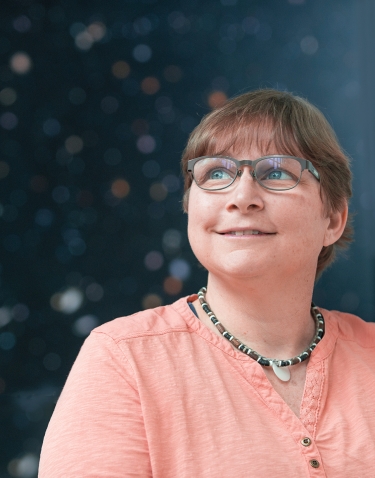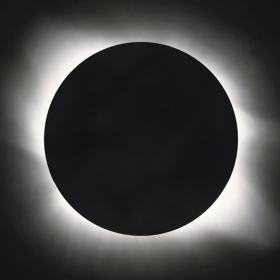Photo by Richard Howard
Kim McLeod’s relationship with the heavens goes way back. Now a professor of astronomy, her enthusiasm for the cosmos is contagious.
How early did you catch the astronomy bug?
So early that I don’t remember firsthand! I’m told I learned constellations from my dad, who was a naval navigator. My mom says that from a young age I wanted to be a “gymnast-astronomer.” When I was a teenager, Carl Sagan’s [documentary] Cosmos cemented the deal.
How would you explain your research to the kids who come to Whitin Observatory on the nights it’s open to the public?
My students and I help to discover planets around other stars. A tiny telescope in Arizona watches zillions of stars looking for ones that might have a planet getting in the way. When it finds one, we use our bigger Wellesley telescope to see if it really is a planet. (Yes, we’ve helped to find a couple! No, we are not famous.)
What should every kid (and adult) see in the night sky?
No question here: the Milky Way, from a truly dark site (but good luck finding one these days). It is awesome in the true sense of the word—terrifying and beautiful at the same time.
What’s the most awesome thing you’ve observed through a telescope?
I’ve observed with some of the biggest telescopes on Earth, but honestly my favorite view is through our historic 12-in. refractor when it is pointed at Saturn. No, Jupiter. No, Saturn. Definitely Saturn.
Rumor has it that you pop handstands in class. Any comment?
I was a gymnast into college. But for the record: While I’ve always done handstands in the Observatory kitchen while waiting for the coffee water to boil, I don’t think I did one in class until my 17th year at Wellesley. It was for pedagogical purposes, of course, in an ASTR 101 discussion about the Moon Illusion (in which one perceives the moon as much bigger on the horizon than when high in the sky). A student brought up the textbook’s claim that one can break the illusion by bending over to look at the moon between the legs, which led to a question about whether it is the upside-downness or the legs-in-view that is important. I suggested that the students do the experiment for themselves: Next time the moon is up, pop a handstand and see what happens. The response was a bunch of rolled eyes and a “Yeah, like somebody could just pop a handstand.” So you see, I really had no choice.







We ask that those who engage in Wellesley magazine's online community act with honesty, integrity, and respect. (Remember the honor code, alums?) We reserve the right to remove comments by impersonators or comments that are not civil and relevant to the subject at hand. By posting here, you are permitting Wellesley magazine to edit and republish your comment in all media. Please remember that all posts are public.